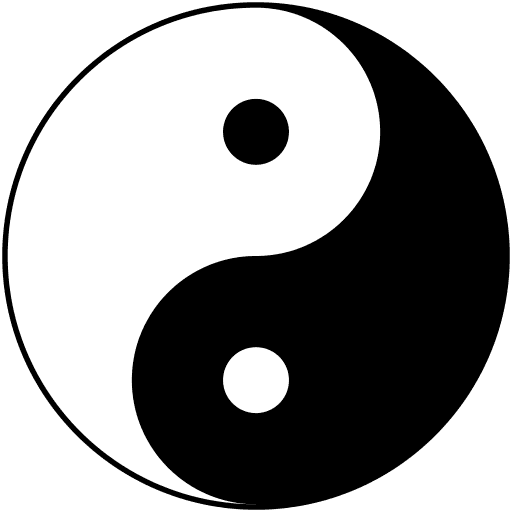
What is the Tao? A Deep Dive into Yin, Yang, and Tai Chi
Introduction to Tao
Tao, a word often spoken but perhaps less understood, stands as a pillar of Chinese philosophy and spirituality. Have you ever wondered about those moments when everything seems to click into place? When there’s an inexplicable harmony in the chaos of life? That, my friend, is a touch of the Tao. If you’re someone who has dipped their toes in the vast ocean of spirituality or holistic health, or even if you’re a curious newcomer, this guide aims to shine a light on the Tao, its underlying principles, and its profound connection to Tai Chi.
The Roots of Tao in Chinese Medicine
For millennia, Chinese medicine has been more than just remedies and treatments. It’s a holistic view of health, encapsulating mind, body, and spirit. And at the heart of this ancient knowledge lies the philosophy of Tao. But to truly grasp the essence of the Tao, one must first delve into the dual concepts of Yin and Yang.
The Intricacies of Yin
Imagine a silent, tranquil night where the world is at rest. Picture the moon’s soft glow, the gentle embrace of darkness, and the world recharging for a new day. This is the realm of Yin – calm, passive, and restorative.
In Chinese medicine, Yin is often visualized as the shaded side of a mountain. It’s cool, mysterious, and nurturing. It represents all things receptive, cool, and internally focused. Qualities like intuition, rest, and reflection are hallmarks of Yin energy.
From a medicinal standpoint, Yin is incredibly essential. Why, you ask? Because Yin, with its nourishing properties, ensures our body’s internal systems function smoothly. It hydrates our tissues, cools our internal temperature, and provides a deep, rejuvenating rest to our organs. It’s like the deep recuperative sleep we crave after a long, tiring day.
To further paint a picture, think of your body as a machine. Yin would be the coolant, ensuring the engine doesn’t overheat. It’s the oil ensuring everything runs smoothly. Without adequate Yin, our bodies can experience dehydration, overheating, or excessive restlessness.
The Dynamics of Yang
Now, after that peaceful night, visualize the break of dawn. The radiant sun stretching its rays, the world waking up, and a surge of energy making everything come alive. That’s Yang – dynamic, fiery, and active.
In the grand tapestry of Chinese medicine, Yang is akin to the sunlit side of a mountain. It’s warm, bright, and externally driven. It encompasses all things active, warm, and outward-moving. When you’re motivated, bursting with energy, or when your metabolism is running high, that’s Yang energy at play.
In the body, Yang acts as the driving force. It’s the spark that ignites our actions, the warmth that circulates our blood, and the energy that powers our day-to-day activities. It’s that burst of adrenaline you feel before an intense workout, and the heat you generate during physical exertion.
But as beautiful as Yang energy sounds, an excess can lead to burnout. Just as a machine can get overworked, so can our bodies. And when there’s too much Yang, we may experience inflammation, high blood pressure, and a restless mind.
Yin and Yang: The Eternal Dance
Life thrives on balance. Day and night, activity and rest, warmth and coolness. This duality is what keeps the universe, and us, in harmony. Yin and Yang, with their contrasting qualities, might seem like opposites, but they’re two sides of the same coin. In fact if you look closely at the Yin-Yang symbol you will see that in the middle fo each section is a dot of the opposite colour. What this means is that Yin and Yang are part of a cycle, when one reaches the extreme it turns to it’s opposite. The maximum swing of the pendulum is exactly when it starts to change to the opposite direction and swing back again. Think of Midsummer’s Day, it is the peak of Summer, and yet it is the first day when the nights start closing in again so in a way it is the start of Winter. Conversely the same principle applies to the midwinter solstice, it is the time of maximum Yin but it is also the first day when Yang begins to rise and the days start getting longer again. This is a basic principle in Taoist philosophy and can be exemplified in Tai Chi practice which is based on Taoism, for example when you stand on tiptoe you become unstable and although momentarily you become taller then it is also more likely that you will fall onto the ground and become smaller and more vulnerable. The same is true if you think about midnight and midday. The same principle is also at work in the body, if you become hotter you become more and more active or Yang until you become so hot that you actually pass out and become completely inactive. Conversely, as you become cold you become more and more inactive until you get so cold you have to start rubbing your hands together and moving around to generate some heat.
Together, Yin and Yang regulate each other, and they ensure our body, mind, and spirit remain in equilibrium. A disruption in this balance can lead to health issues, mental unrest, and emotional imbalances.
Tai Chi: A Symphony of Yin and Yang
Enter Tai Chi – an ancient martial art form that’s more than just self-defense. It’s a dance of energies, a physical manifestation of the Tao, and a way to maintain the delicate balance of Yin and Yang in our lives.
Our Tai Chi club welcomes all who wish to experience this harmony firsthand. As you learn the fluid movements of Tai Chi, you’re not just engaging in physical activity; you’re embarking on a journey of self-awareness, balance, and health.
Especially when we talk about liver function and the flow of Qi (life energy), Tai Chi emerges as a guardian. The liver, in Chinese medicine, is the chief officer of Qi flow. Through Tai Chi, one ensures this officer is always alert, directing Qi seamlessly throughout the body, preventing any blockages or imbalances.
Conclusion
Understanding the Tao, Yin, Yang, and Tai Chi is like unlocking the secrets to a balanced life. It’s the guidebook to holistic health and a fulfilled existence. Joining our Tai Chi club is not merely about mastering an art form; it’s about embracing a philosophy that has stood the test of time. Dive deep, explore the dance of energies, and let every move, every breath, resonate with the universe’s rhythm.
Frequently Asked Questions (FAQs)
- What is Qi, and why is it important?
Qi is the vital energy flowing within us, crucial for health and vitality. It’s the bridge between body, mind, and spirit in Chinese medicine. - Is Tai Chi suitable for all age groups?
Absolutely! Tai Chi is versatile and can be adapted for individuals of all ages and fitness levels. - How does Tai Chi aid mental well-being?
Tai Chi, with its meditative movements, promotes mindfulness, reduces stress, and enhances mental clarity. - How often should one practice Tai Chi?
Consistency is key. Even a few minutes daily can be beneficial, but regular sessions, say 3-4 times a week, can work wonders. - Why is balancing Yin and Yang crucial?
A balanced Yin and Yang translate to physical health, emotional stability, and mental clarity. It’s the foundation of holistic well-being in Chinese philosophy.
By tapping into the ancient wisdom of the Tao, Yin, Yang, and Tai Chi, you’re not only enhancing your health but also enriching your soul. Ready to embark on this journey? Our Tai Chi club awaits!
